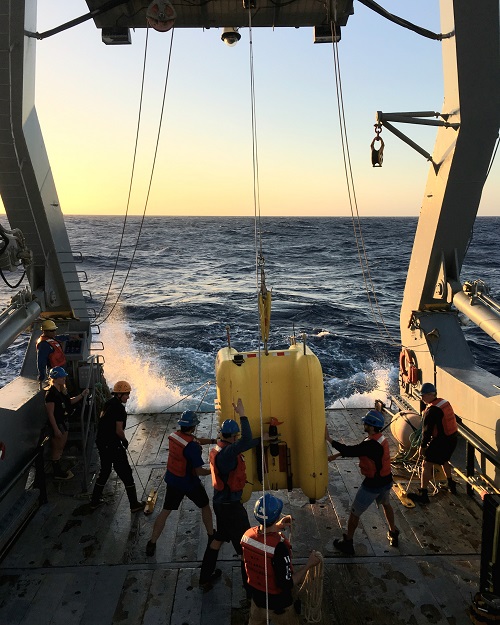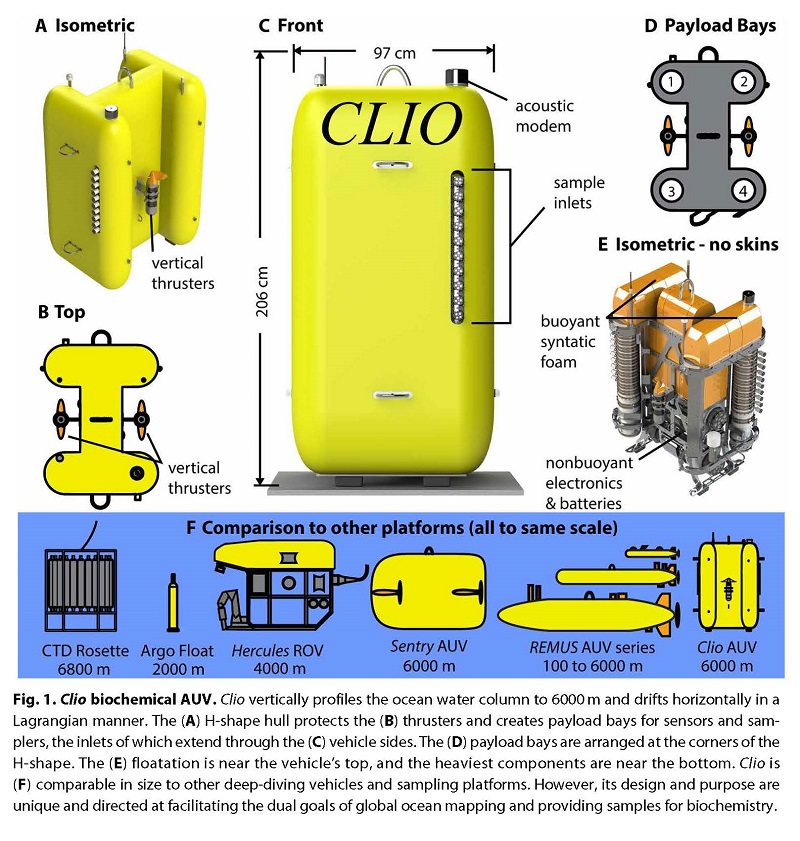Clio
 Clio is an autonomous underwater vehicle (AUV) created to accomplish the dual goals of global ocean mapping and biochemistry sampling. The ability to sample dissolved and particulate seawater biochemistry across ocean basins while capturing fine-scale biogeochemical processes sets it apart from other AUVs.
Clio is an autonomous underwater vehicle (AUV) created to accomplish the dual goals of global ocean mapping and biochemistry sampling. The ability to sample dissolved and particulate seawater biochemistry across ocean basins while capturing fine-scale biogeochemical processes sets it apart from other AUVs.
Clio is designed to efficiently and precisely move vertically through the ocean, drift laterally to observe water masses, and integrate with research vessel operations to map large horizontal scales up to a depth of 6,000 meters.
On a recent mission, Clio conducted high-resolution sensor surveys and mapped 1,144 kilometers of the Sargasso Sea to a depth of 1,000 meters. These results demonstrate a robotic oceanography approach for global-scale surveys of ocean biochemistry.
Clio is similar in size to water sampling rosettes, which are common to oceanographic research vessels, and can be deployed, recovered, and shipped with similar equipment. On deck, the vehicle stands vertically on integral landing skids and can be launched and recovered from this position. Clio has an aluminum structural chassis that supports all components including (i) two vertical thrusters, (ii) three pressure housings for electronics and batteries below, (iii) syntactic foam flotation above, (iv) four sample return payload bays around the perimeter of the midsection, and (v) sensors near the bottom. With payload bays for sample return, the vehicle is enclosed in high-density polyethylene shells. These shells are removable, which provides operators easy access to the sample return systems and power and communication cables. An acoustic modem, located toward the top, allows operators to acoustically range on the vehicle and receive regular vehicle status updates.
Also included are three independently powered depth-activated beacons, a GPS/Iridium unit to provide an over-the-horizon location, a strobe for line-of-sight location, and a VHF (very high frequency) radio beacon, which alert operators to the vehicle’s position when it surfaces.
